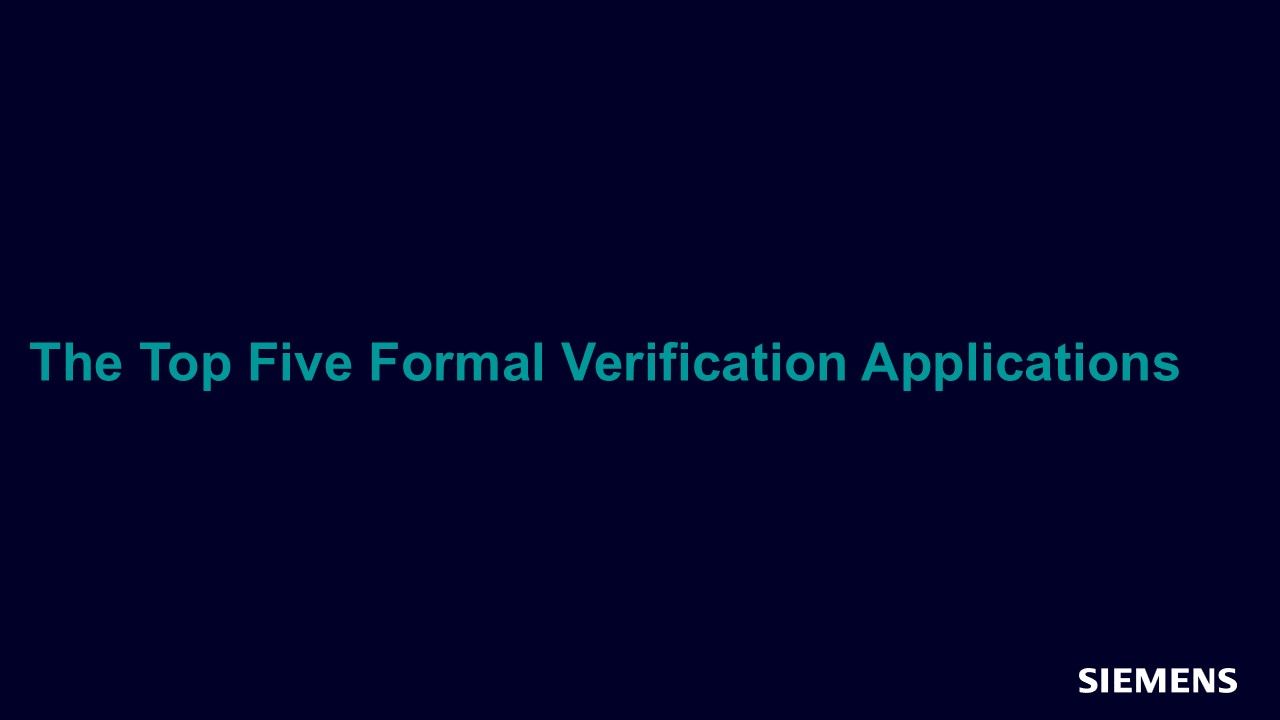The Top Five Formal Verification Applications
It's no secret. Silicon development teams are increasingly adopting formal verification to complement their verification flow in key areas. Formal verification statically analyzes a design's behavior with respect to a given set of properties.

Full-access members only
Register your account to view The Top Five Formal Verification Applications
Full-access members gain access to our free tools and training, including our full library of articles, recorded sessions, seminars, papers, learning tracks, in-depth verification cookbooks, and more.